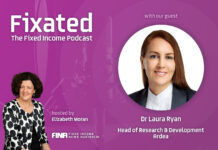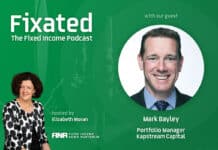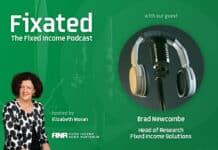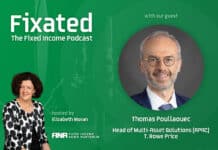
By Jay Sivapalan, Head of Australian Fixed Interest and Emma Lawson, Fixed Interest Strategist – Macroeconomics at Janus Henderson Investors.
President Trump’s tariff policy has been harder hitting than many economists and markets had hoped – and highlight the important role that fixed income can play in portfolios and the benefits of active management.
For Australia, we lower our Gross Domestic Product (GDP) forecast from 2.5% year on year to 2.1% for 2025, with risk to the downside. For now, we aren’t changing our central CPI forecasts.
Our Reserve Bank of Australia (RBA) base case remains a 100 basis points (bps) easing in total, equal to a cash rate of 3.35% by end 2025.
Investment Implications
As we look forward to the volatile and widely dispersed set of possible outcomes, our bias remains to remain invested with a central investment thesis but retain a blueprint for alternative cases and to navigate these using our full spectrum of active levers (physical and derivatives – where permitted) to navigate the unfolding environment.
The central case is a pro-growth environment from stimulatory moves in monetary policy and a supportive fiscal backdrop. Corporates in the IG space also remain well funded, highly profitable and resilient.
Lower quality credit remains more vulnerable to large economic shocks. While we have a central scenario, we are cognisant of the rising probability of geopolitics causing sentiment to adversely shift creating a negative feedback loop for the economy.
Also read: Bonds Take The Lead Amid Global Market Volatility
Globally
Comments from Janus Henderson Investors Portfolio Managers John Lloyd and Greg Wilensky highlight five key points for investors as they consider how to navigate the current environment.
1. Despite the sticker shock of the announced tariffs – which came in higher than markets were anticipating – we believe the numbers represent an “opening bid” that establishes an anchor for negotiations as the Trump administration seeks to reorient the dynamics of global trade.
While it is our view that tariffs are not a net positive for global growth, we believe the tariff announcement represents the beginning, not the end, of the negotiating process. As a result, we think there is a high likelihood that tariffs ultimately settle meaningfully below the numbers that were presented on April 2.
Investors should keep in mind that a lot can – and almost certainly will – change in the weeks and months to come.
2. Due to uncertainty regarding the path and eventual outcome of global trade negotiations, markets for risk assets are likely to remain choppy in the near term.
We suggest investors avoid trying to time the markets as it is not unusual to experience both large rallies and pullbacks during bouts of volatility. Rather, we believe investors should rely on a time-tested approach of remaining invested and staying diversified. This is also a good time for investors to review their strategic asset allocation to ensure they are invested in portfolios they would be comfortable holding through all market cycles.
3. With the federal funds rate still around 4.25%-4.50%, the Federal Reserve (Fed) remains well positioned to provide relief to the U.S. economy by way of easier monetary policy if labour markets weaken.
Notably, we believe the Fed would prioritize its full employment mandate (by cutting rates more aggressively) if it faces a scenario of higher unemployment coupled with higher prices. In our view, fixed income investors are on the right side of the Fed in the present environment.
4. While uncertainty and the resulting volatility may be unwelcome to most investors, it may provide opportunities for active managers to seek improved risk-adjusted returns. Indiscriminate selling may create attractive relative value opportunities for active managers with a long-term view.
Summary
Some fixed income sectors are currently offering attractive yields in the mid-to-high single digits, with lower historical volatility than equities, and the recent widening in credit spreads has made valuations more attractive. Additionally, fixed income assets are once again exhibiting low or negative correlation to equities –which we view as an essential element of investment portfolios during uncertain times.

































